Ranking of the 16 Best Military Dogs

Since our first interactions thousands of years ago, dogs and people have formed an unbreakable bond. As guardians and hunting partners, dogs shared the daily burdens of ancient life. It was therefore natural, when wars broke out between peoples, that dogs would join the battlefield.
One of the earliest mentions of the use of dogs in warfare dates back to around 600 BC. For many centuries dogs maintained a presence in the military, serving to boost the morale of soldiers and being eventually bred to play more specific roles in combat.
During World War II, the United States Army began a more concerted effort to recruit and train dogs for combat use. Today, dogs serve in various military capacities around the world.
Despite the many technological advancements of the modern military, some tasks are still best accomplished by well-trained canine soldiers, thanks to their senses of smell and hearing.
As military dogs serve in a wide variety of roles, the breeds used by the armed forces also vary widely. Throughout history, many races, large and small, have played vital military roles in times of war and peace. Here are 16 military dog breeds that have answered the call for duty over the years.
The 16 Military Dog Breeds
German shepherd

- Life expectancy: 12-14 years
- Temperament: Confident, courageous and intelligent
- Colors: Two-tone, black, black and cream, black and tan, black and red, black and silver, blue, gray, liver, sable, white
belgian malinois

- Life expectancy: 14-16 years
- Temperament: Confident, intelligent and hardworking
- Colours: Fawn, fawn sand, mahogany, red, red sand
This high-intensity breed first answered the call of duty during World War I, where they served as messengers and helped find wounded soldiers left on the battlefield.
Today, Belgian Malinois are widely used by the military as all-purpose working dogs. Like German Shepherds, the Belgian Malinois is intelligent and athletic, with an intense, aggressive demeanor well suited for military use.
The Belgian Malinois is the preferred military working dog to deploy with elite units like the Navy SEALS because it is lighter than the German Shepherd and can be parachuted in more easily.
A Belgian Malinois named Cairo was part of the SEAL team that eventually tracked down Osama Bin Laden in 2011.
dutch shepherd

- Life expectancy: 11-14 years
- Temperament: Intelligent, lively and athletic
- Colours: Golden Brindle, Silver Brindle
Much like their German and Belgian counterparts, Dutch Shepherds are popular military working dogs.
Originally bred as shepherds in the Netherlands, Dutch Shepherds were drafted into the German military during World War II due to their high working qualities.
Today, Dutch Shepherds join the two breeds previously described to make up the majority of working dogs in the US military.
Dutch Shepherds are intelligent dogs that are very easy to train, making them a good choice for military service.
Labrador Retrievers
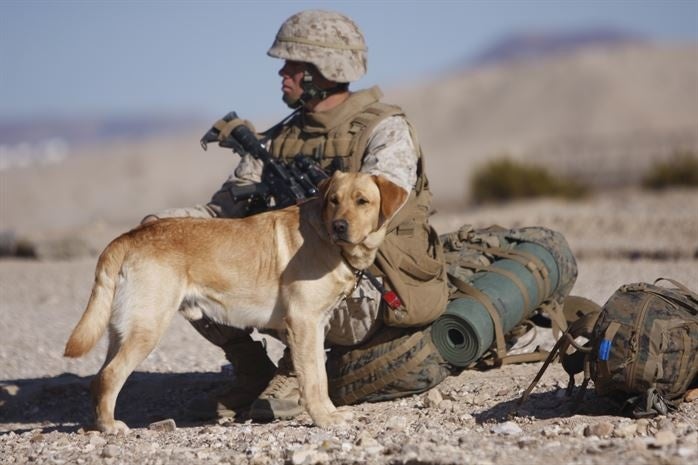
- Life expectancy: 10-12 years
- Temperament: Friendly, active and outgoing
- Colors: Black, chocolate, yellow
Bred to use their noses as hunters, Labrador Retrievers also use their unrivaled sense of smell as military working dogs.
The modern military relies heavily on Labradors as specialized search dogs, who sniff out explosives alongside their handlers. Friendly, intelligent and very easy to train, Labradors are also used as stress control dogs in combat.
Their happy tails and friendly faces can be a welcome relief to soldiers during long and intense deployments.
Airedale Terrier
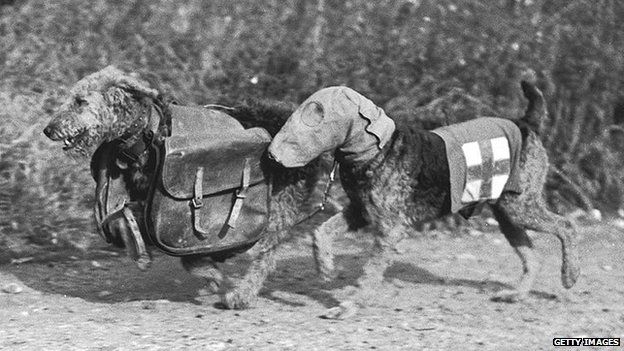
- Life expectancy: 11-14 years
- Temperament: Friendly, intelligent and courageous
- Colors: Black and Tan, Grizzle and Tan
The "King of the Terriers", the Airedale Terrier is one of the first breeds to bravely serve in the British Army during the First World War.
Intelligent and determined, Airedale Terriers stood guard as sentry dogs and were trained to carry messages on the battlefield.
Airedale terriers also aided the Red Cross by sniffing out wounded soldiers and carrying medical supplies.
Less used by today's military, the heroism of Airedale terriers in World War I was widely recognized by soldiers on both sides.
siberian husky
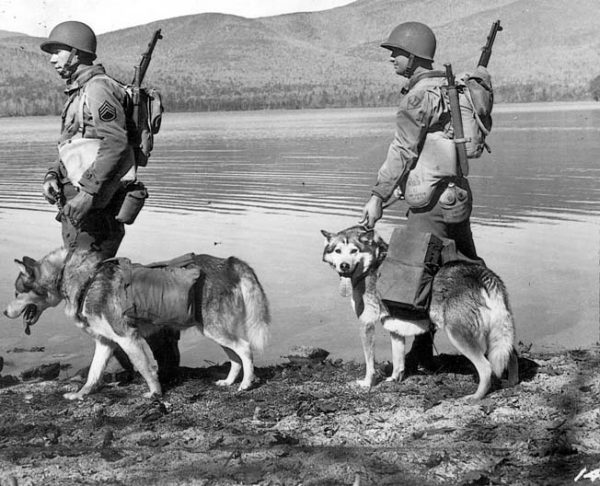
- Life expectancy: 12-14 years
- Temperament: Loyal, mischievous and outgoing
- Colors: Agouti and white, black, black and white, black and tan and white, brown and white, gray and white, red and white, sable and white, white
Siberian huskies were bred to pull sleds and that's exactly how they were used by the US military during World War II.
When Pearl Harbor was attacked on December 7, 1941, Huskies and Alaskan Malamutes were the only two active breeds in the military dog program.
Siberian huskies served as search and rescue dogs in the Arctic, capable of providing transportation in the harshest weather conditions when motorized vehicles were inoperable.
Although no longer in service with the US military, huskies have recently been recalled into service with the Russian military, where they have been trained to provide transport in areas where weather and terrain make vehicles difficult reliable.
Alaskan Malamute

- Life expectancy: 10-14 years
- Temperament: Affectionate, loyal and playful
- Colors: Agouti and white, black and white, blue and white, gray and white, red and white, sable and white, seal and white, silver and white, white
Like the Siberian Husky, the Alaskan Malamute was used as a sled dog by the United States military during World War II.
Alaskan Malamutes were also among the first military dogs trained in parachuting.
As part of their search and rescue mission, the Malamutes would jump over difficult terrain and transport rescue teams to search for downed aircraft and their crews.
Giant Schnauzer

- Life expectancy: 12-15 years
- Temperament: Loyal, alert and easy to train
- Colors: Black, Salt and Pepper
Originally bred as a herding dog, the Giant Schnauzer was used as a sentry and tracking dog by the German military during both World Wars.
In America, Giant Schnauzers were used by the Air Force in World War II and again in the 1980s but their temperaments were not considered as suited for military work as other breeds. .
However, the Department of Defense recently gave the breed another shot, selecting a Giant Schnauzer named Brock to train in scent detection and patrolling.
Honoring his race, a fully trained Brock served on a presidential detection team in Germany in 2017.
Boxer

- Life expectancy: 10-12 years
- Temperament: Bright, fun-loving and active
- Colours: brindle, fawn
The German army used Boxers extensively during both World Wars. The sturdy Boxers served their country loyally as pack dogs and messengers.
While some Boxers are still used as army working dogs, they are much more popular as companion dogs around the world.
In fact, their military service is the source of their worldwide popularity, as many soldiers returning from World War II brought Boxers back with them.
Doberman Pinscher

- Life expectancy: 10-12 years
- Temperament: Loyal, fearless and alert
- Colors: Black and Rust, Blue and Rust, Fawn and Rust, Red and Rust
Protective and intelligent, the Doberman Pinscher was a widely used military working dog during both World Wars. They served as sentries, messengers and detection dogs.
Dobermans also helped find and rescue injured soldiers. The US Marines had their own corps of Dobermans, nicknamed "Devil Dogs", who bravely served in World War II.
The first war dog memorial is on the island of Guam, where 25 of the Doberman Devil Dogs lost their lives and were buried.
Today, Dobermans are used less in the US military but still serve in other countries, such as India.
Rottweiler

- Life expectancy: 9-10 years
- Temperament: Loyal, loving and confident guardian
- Colors: Black and Mahogany, Black and Rust, Black and Tan
A large and intimidating breed, the Rottweiler was first used as a military dog during the First World War.
These intelligent and loyal dogs served as guards, alerting troops to enemy movements.
These days, Rottweilers are used less as military working dogs.
Bouvier des Flandres
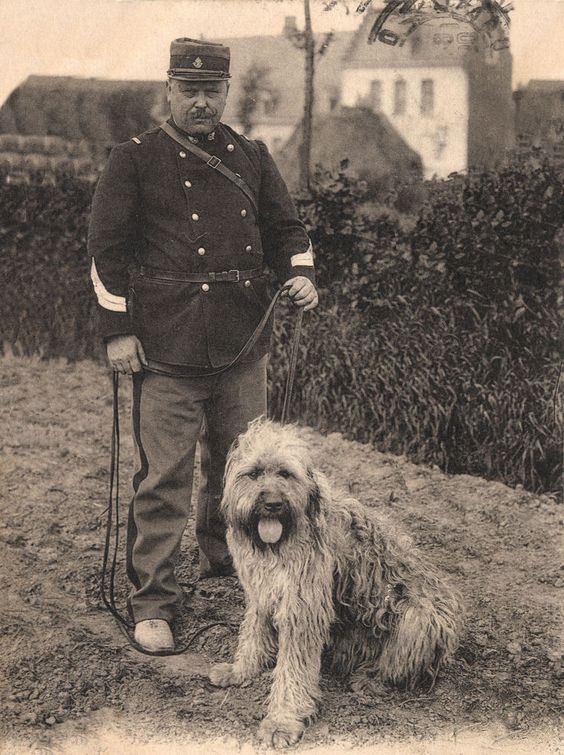
- Life expectancy: 10-12 years
- Temperament: Affectionate, courageous and strong-willed
- Colors: Black, Brindle, Fawn, Gray Brindle, Salt and Pepper
The Bouvier des Flandres was bred in Belgium as a versatile farm dog, to herd cattle and pull carts.
When World War I turned their country into a war zone, the Bouviers were drafted into the army. This hardworking breed was used to deliver messages and pull litters of wounded soldiers.
The Bouviers also played a similar role during World War II.
irish terrier

- Life expectancy: 13-15 years
- Temperament: Bold, dashing, and soft-hearted
- Colors: Red, wheaten red, wheaten
During World War I, brave Irish Terriers could be found in the trenches of the British Army.
These little red terriers were trained as messengers. Originally bred to hunt rodents, they also fulfilled this function in times of war, hunting vermin that infested the trenches.
Mastiff

- Life expectancy: 6-10 years
- Temperament: Courageous, dignified and good-humored
- Colours: Apricot, brindle and fawn
If there is an original military dog, Mastiffs can probably claim that title.
This breed dates back at least 2,500 years. Many ancient civilizations, such as the Persians, Greeks, and Romans, took their giant watchdogs to war.
These dogs were used not only to guard but also to attack the enemy.
Modern descendants of these early Mastiffs have been robbed of much of their war dog mentality and are more often found drooling in living rooms than patrolling as fighting dogs.
border collie

- Life expectancy: 12-15 years
- Temperament: Affectionate, intelligent and energetic
- Colors: White and blue, white and blue merle, white and red, white and red merle, white, black, blue, blue merle, brindle, gold, lilac, red, red merle, sable, sable merle, saddle sable, white and black
Considered the smartest of dogs, the Border Collie was one of many breeds recruited by the British Army during World War I.
Like many of the breeds already mentioned, the Border Collie served as messengers, sentries and helped locate wounded soldiers.
Although their intelligence and speed are unquestionable, Border Collies are no longer used as military dogs.
black russian terrier
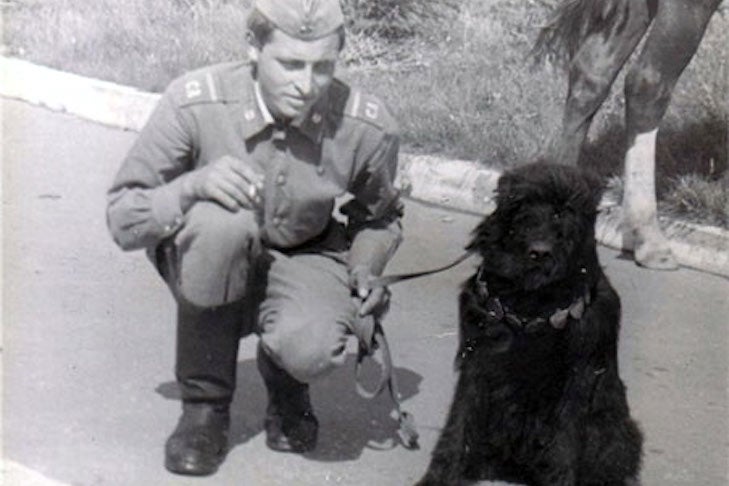
- Life expectancy: 10-12 years
- Temperament: Intelligent, calm and powerful
- Colors: Black, Salt and Pepper
The Black Russian Terrier was literally bred to be a military working dog. After World War II, the Soviet Army decided to create the perfect working dog for their needs.
To achieve this, she combined 17 different breeds, some of which feature on this list, such as the Giant Schnauzer, Rottweiler, and Airedale. The result was a large guard dog capable of working in Russia's extreme climate.
Black Russian Terriers are used on patrol, to detect mines and to perform search and rescue operations.
0 comments
